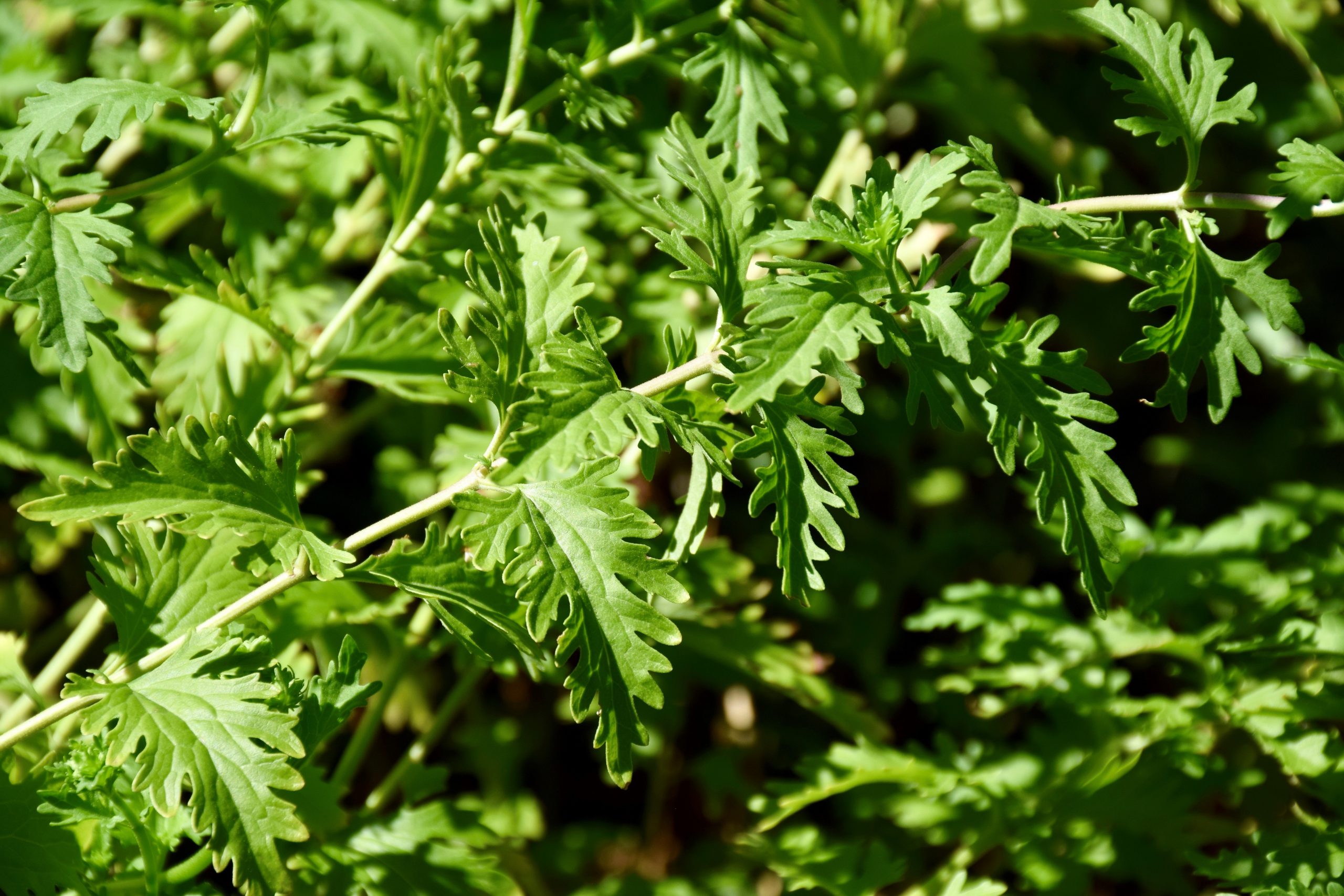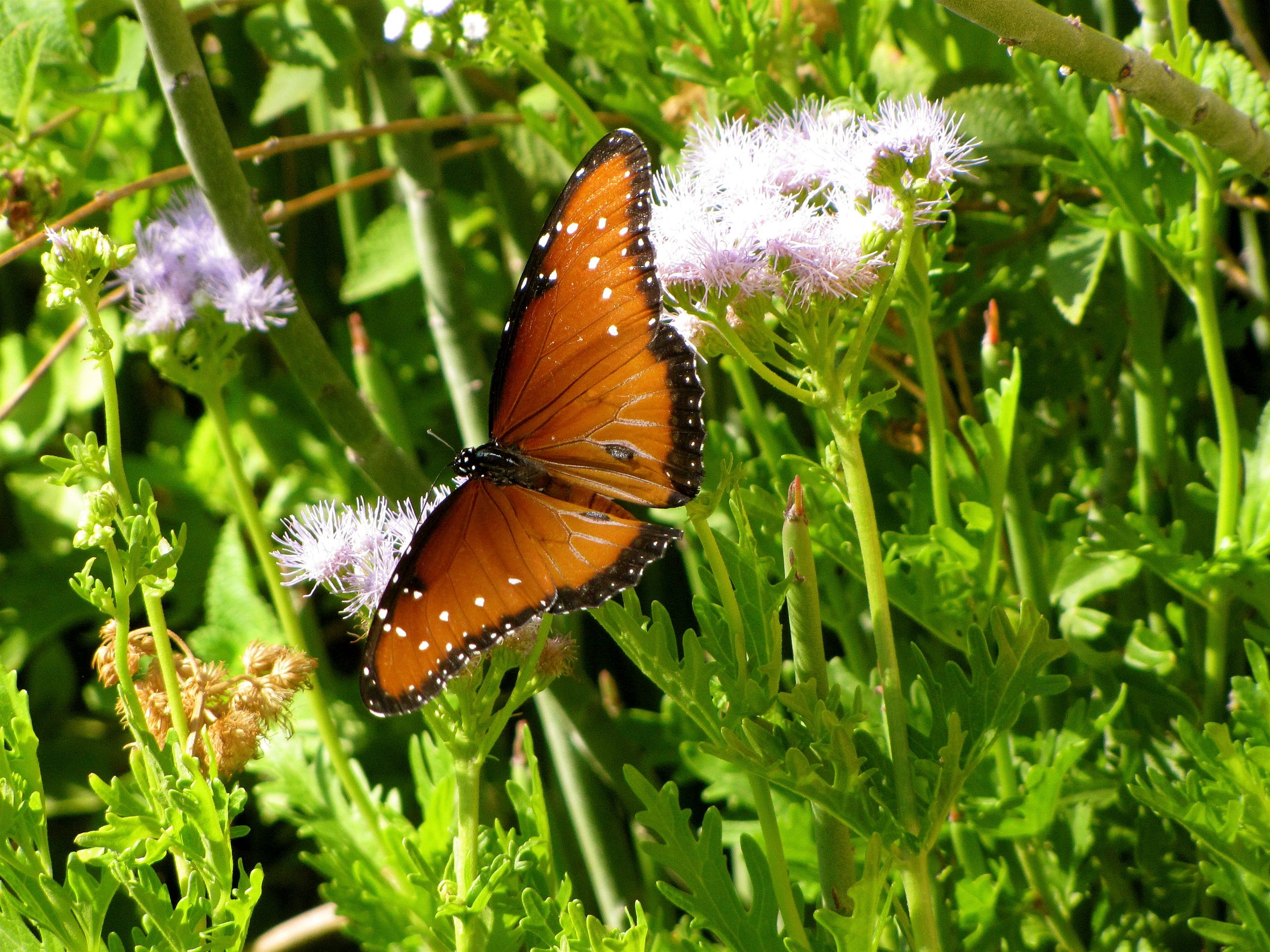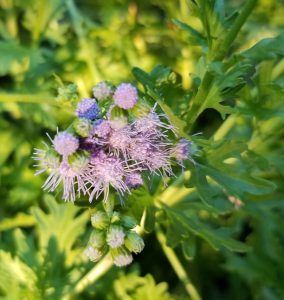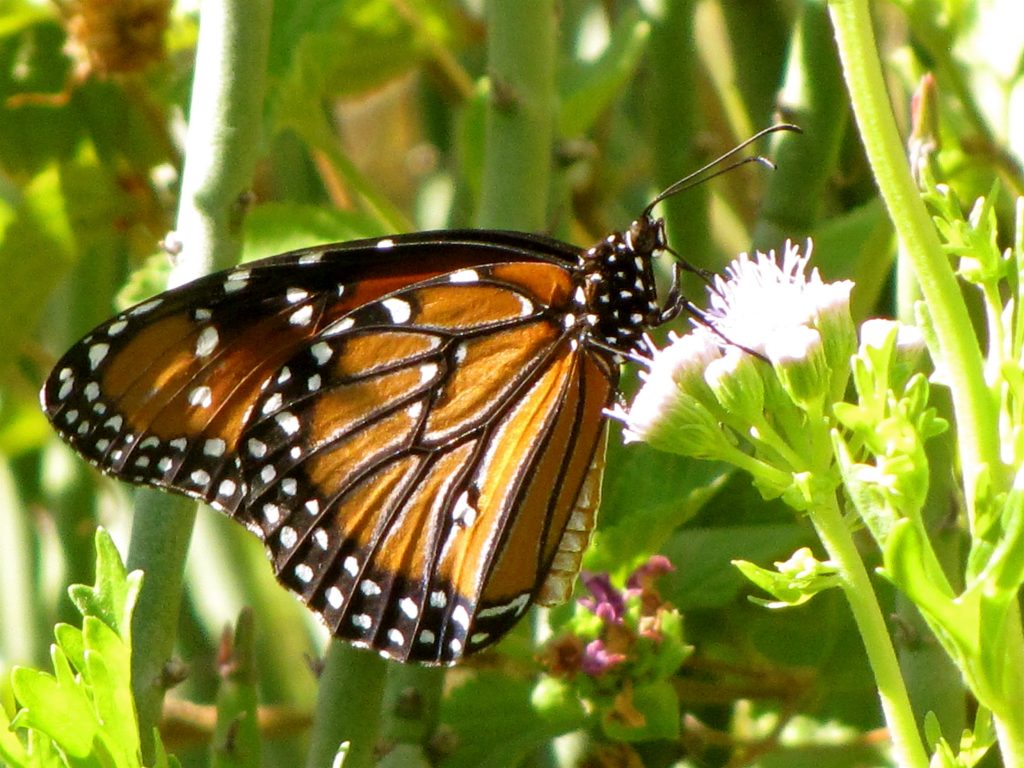If you want to attract butterflies to your yard, be sure to plant Mist Flower (Conoclinium dissectum, also sold as Eupatorium greggii). This flowering perennial can grow to a height of 1 ½ – 2 ½ feet and a width of 2-3 feet. Beautiful fuzzy lavender-blue, and blue-purple flowers adorn the plants in tight clusters at the ends of branches, and attract butterflies, especially the Queen Butterfly, Danaus gilippus.
FIELD NOTES
Mist Flower, (also called Blue Mistflower) is found along stream beds and on mesas and flats from western Texas to southeastern Arizona, south into northern Mexico. Plants are frequently found on sandy soil, loam or limestone-derived soil between 3,500- and 6,000-feet elevation.

DESCRIPTION / FORM
This small herbaceous perennial can be upright and bushy or have stems sprawling along the ground and then turning up near the ends. Its light green, pinnately lobed leaves give it a fine texture. Flowering may begin as early as March and can continue until October or November.
CULTURE / MAINTENANCE
Plants are root-hardy to at least zero degrees Fahrenheit, with the tops freezing back when nighttime temperatures drop into the low 20s F. They will appreciate midday filtered light in the hot, interior desert regions but will grow fine in full sun if given supplemental water regularly in the summer. Plants are low – to moderate water using and grow fine in loose, rocky, native soils, reaching two feet tall and two feet wide in a couple of years. Cut back any dead stems in late winter, and if the plants overwinter without dying back, cut them to ground level, as they will resprout from underground stems called rhizomes.

IDENTIFICATION
Mist Flower is very easily distinguished from any other Eupatorium species by its combination of highly divided leaves and lavender-blue flowers. The flowers are very similar to those of Ageratum corymbosum, but the divided leaves of Conoclinium, or Eupatorium readily separate the two plants.

LANDSCAPE APPLICATION
This plant is the perfect size to use in a cactus and succulent garden or to plant near large boulders. Match it up with Agave species, Dasylirion species, Echinocactus grusonii, Ferocactus pilosus, Hesperaloe funifera, Nolina nelsonii, and with tall accents like Yucca rigida and Yucca rostrata. Get into the butterfly garden with Ageratum corymbosum, Lantana ‘New Gold,’ and Salvia greggii.
PRECAUTIONS
Rabbits will likely eat the stems if there is nothing else around. Best flower production takes full sun, which needs more watering during the hottest time of the year.
~ ~ ~ ~ ~ ~ ~ ~ ~ ~ ~ ~ ~ ~ ~ ~ ~ ~ ~ ~ ~ ~ ~ ~ ~ ~ ~ ~ ~ ~
Did you know that up to 70% of water use is outdoors? That’s why we love desert plants and feature them each month. Fall is a great time to plant! Learn more about plants for your landscape in our Arizona Low-Water-Use Plants page. Visit our page on Choosing and Planting Low Water-Use Plants for tips on plant selection and how to plant properly. Also, be sure to read through all of our featured Plant of the Month blogs!
Water – Use It Wisely is proud to feature guest bloggers who write about topics related to water and water conservation. Greg Starr is a horticulturist and the owner/manager of Starr Nursery located in Tucson, AZ. It is a mail order nursery where you can shop online. Greg has traveled extensively in Mexico and the southwestern United States to study native plants for their potential landscape use in desert regions of the world. In 2009, Greg entered the world of literature as an author with the publication Cool Plants for Hot Gardens (currently sold out but under revision for a new and improved second edition). In 2012 he published his second book, Agaves: Living Sculptures for Landscape and Containers.


